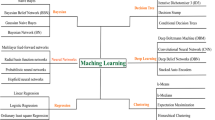Abstract.
Inverse modeling aims to estimate transmissivity and other parameters needed by distributed aquifer models, using piezometric measurements. While these parameters are highly variable in space, the two-dimensional aquifer area is essentially empty of measurements (“curse of dimensionality”). To address this problem, a representation of the two-dimensional transmissivity map based on ridge functions and neural networks is introduced and applied to inverse aquifer modeling. The proposed representation has good expressive power, i.e. it is concise and convergences quickly as the number of parameters are increased, and it is expected to express complex transmissivity variations with relatively few parameters which can be estimated from the piezometric measurements. A simple regularization that can dampen erratic high frequency terms in the estimated parameters is suggested. Several examples indicate that the proposed parameterization can handle diverse types of transmissivity variations while it is particularly suited when the true transmissivity map exhibits specific sorts of heterogeneity with large anisotropies or abrupt changes along lines.
Similar content being viewed by others
Author information
Authors and Affiliations
Corresponding author
Rights and permissions
About this article
Cite this article
Mantoglou, A. Estimation of heterogeneous aquifer parameters from piezometric data using ridge functions and neural networks. Stochastic Environmental Research and Risk Assessment 17, 339–352 (2003). https://doi.org/10.1007/s00477-003-0155-3
Issue Date:
DOI: https://doi.org/10.1007/s00477-003-0155-3




